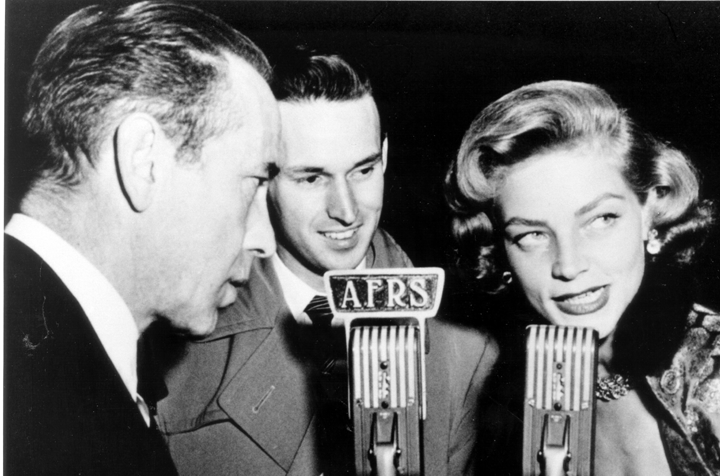 DigNittany: TV has finally discovered women’s volleyball. In the past few seasons, live-broadcast and streaming video coverage of NCAA women’s volleyball has increased exponentially.
DigNittany: TV has finally discovered women’s volleyball. In the past few seasons, live-broadcast and streaming video coverage of NCAA women’s volleyball has increased exponentially.
To get a sense of just how dramatic that increase has been, in 1999, only a handful of NCAA women’s volleyball matches were broadcast nationally (we only saw one – the National Championship match). By the end of the 2014 regular season, the Big Ten will have broadcast more than 100 women’s volleyball matches (including streaming video), Pac-12 Networks will have aired 96 matches, ESPNU will have broadcast 24 matches, the SEC Network will have broadcast 40 matches, and the Longhorn Network will have broadcast 14 Texas matches.
That’s a total of more than 275 matches (and even more will have been broadcast by services like CBS All Access, which provide streaming video coverage of many other NCAA women’s volleyball matches.)
So the good news is that NCAA women’s volleyball is widely available on live television and through streaming video. The fly in the ointment is that there appears to be a shortage of experienced commentators, TV crews, and directors — people who know the sport and are able to communicate the drama of the matches to viewers, both visually and through play-by-play and color commentary. So fans – both old and new – get frustrated and sometimes tune out.
We’ve asked tomclen and joetrinsey, two long-time fans of women’s volleyball, to share their thoughts on how TV/streaming internet broadcasts of NCAA women’s volleyball matches could be improved. [Editor’s note: This discussion doesn’t address the quality (or lack thereof) of internet streaming video broadcasts – which often suffer from low-resolution, freeze-ups, and other frustrations for viewers. That will be the topic of a subsequent Q&A.]
1. A Graphic Example: Who’s on First? (and “Who’s in the Front Row?”)
DigNittany: One suggestion we’ve heard from both of you is that broadcasts of NCAA women’s volleyball don’t provide fans with information about substitutions and rotations – which often are completely ignored. Your thoughts and suggestions?
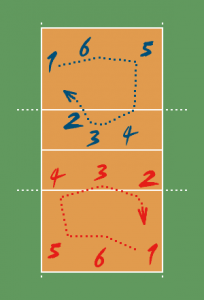
tomclen: Volleyball is a great in-person sport. Translating all that goes on in a match for television is challenging. Play-by-play announcers often ignore substitutions, rotations and match-ups. Why not fix this with graphics? Develop a small six-position square in the corner of the screen with players names. There could be one version that shows just one team’s rotation, and another version that shows the front-row match-ups of both teams.
Using such a graphic might also help keep the announcing crew more focused. They could reference the substitutions that the viewer was seeing on screen and then offer more detailed insight. But even if graphics are not an option for a network, it’s something the play-by-play and analyst should focus on.
The other aspect of play that should be of a focus for the actual broadcast is the actual play. Many broadcasts seem to be locked into showing a replay of every single kill. Unfortunately, they tend to frequently miss the beginning of the next play because they don’t get out of the replay quickly.
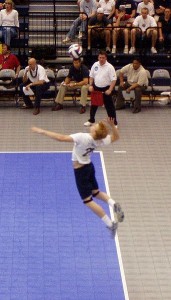
Then we miss the serve. Sometimes we miss the serve-receive. Sometimes we even miss the set. Not only do they miss serves because of a replay, but sometimes a serve is missed because they stay with a tight shot of a player on the other side of the net; or a shot of the coach shouting instructions.
If I were a network executive, my one rule for every volleyball director would be “DO NOT MISS A SINGLE SERVE….PERIOD.” The replay of an OH hitting the ball off the block is nice, but we don’t need to see it after every play.
joetrinsey: I think incorporating more about rotations and matchups into the coverage would be huge. We were doing some live-tweeting at the 2013 NCAA Championship between Penn State and Wisconsin and, as the 4th game got into the mid-teens, I noted that Micha Hancock would get to the service line with the game in the balance. I’m sure Penn State fans remember that she went back to serve with PSU down 21-23 and served the game and match out. Now, this wasn’t any sort of complicated prediction, I just looked ahead a little at the rotations and could see that was coming up. The fan reaction to that tweet was really positive; as Hancock went back to serve for the first time, several fans instantly retweeted it. Building that sort of connection where fans are looking ahead to something in the game builds excitement when it comes up.
Baseball does a great job of this, as every team has 1 or 2 big hitters that build excitement when they get on deck. When teams have a dominant closer the fans just pray the team can get through the 8th with the lead because their guy will slam the door in the 9th.
Because of the way rotations are structured, volleyball has a really natural setup for setting the stage this way. Matchups stay consistent for a whole game, and, because many teams keep their rotations consistent, they often stay fairly consistent throughout the whole match. Paying a little attention to this would really enhance the broadcast.
Often, coaches are faced with a strategic choice: do I stick with the starting rotation that I prefer best, or do I make a change to try to get a better matchup? One thing was received very positively in our NCAA Championship Match Preview at the AVCA convention was when we highlighted that Penn State and Wisconsin were both fairly predictable in their starting rotations. And, if Wisconsin was consistent, it would match up Demi Morales with Ariel Scott, which was obviously a terrible matchup for Wisconsin. So we wondered whether Wisconsin would stick with their usual starting rotation or make a change for a matchup reason. They ended up sticking with their preferred rotation, and Ariel Scott got set 51 times and hit about .300.
Giving fans a little taste of what’s coming up gives them something to anticipate and builds a sense of drama.
In Japan, their broadcasts use a little rotating lineup graphic in the bottom of the screen. It’s cool because it shows the viewer who is in the front row and what servers are coming up. It’s not a complicated graphic, but the Japanese budgets for their broadcasts are much higher than what we would have here for an NCAA match- which makes sense because they are consistently getting over 1 million viewers for their matches.
2. Focus on the Players and the Game Action (Fans Aren’t Dumbbells) — and Less can be More
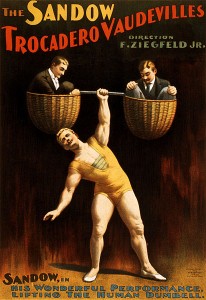
DigNittany: Another frequent criticism is that broadcasters appear to assume that viewers know nothing about the sport of volleyball and NCAA rules – often starting the match with “the match is best out of five, the first four sets go to 25, and a fifth set – if needed – is to fifteen. Win by two, and the short person in the different colored jersey is the libero, who can substitute freely.” This drives a lot of fans who know the sport (and some who don’t) to distraction.
(Our personal pet peeves are “some of these women can touch 10 feet,” and a recent one – following a serve by Penn State’s Sr. setter Micha Hancock that clipped the net and dropped for an ace: “teams practice that every day.”)
On the other hand, the sport has changed a lot as television coverage has increased – with most rules changes aimed at speeding up play. For example:
- The sport moved from side-out scoring (where a point could only be scored by the serving team), to rally scoring (where, with rare exceptions for do-overs, every play results in a point).
- The libero position was created – arguably to open up an additional spot for less vertically-gifted players, thus broadening the appeal of the sport.
- Somewhat inexplicably, the term “games” was changed to “sets” (a term that already was used in volleyball to describe a pass to an attacker), and for good measure, “sets” were changed from 15 points to 30 points, then back to 25 points – with those aforementioned anomalous 15-point fifth sets.
How much explanation of the rules is helpful – or should it all be tossed overboard and get right to the action?
tomclen: For the most part, explanation of the rules should just be dumped. Announcers can make simple comments like “We’re starting the crucial fifth set, which is only played to 15, not 25 points.” They don’t need to instruct us four or five times a broadcast that “each set is to 25, but fifth is to 15, you have to win by two.”
The explanation of the libero is also a waste of time. There are multiple rules in football about which players are ineligible for receiving a pass, which numbers each position should wear, etc., but you don’t hear the NFL announcers belaboring the point. In baseball, a bunt that goes foul with two strikes is an out; a batter can try to reach first if a catcher drops a third strike; a batter can be called out on an infield fly rule without the infielder catching the ball. These are all somewhat obscure rules, but you don’t hear baseball broadcasters explaining the rules to viewers three or four times in a game. It’s condescending.
The whole “you gotta win by two; libero wears a different color jersey” refrain is frustrating, but the one thing many announcers do that I find most distracting is failing to focus on the action on the court. Often they will begin a story about a player and the play-by-play person and analyst will continue the story for two or three points, completely ignoring the action. One of the things that is so exciting abut being at a volleyball match in person is the incredible focus the entire arena seems to have on every play. But when you watch on television, the announcers sometimes are focused on everything BUT what’s happening on the court.
It’s a fast moving sport with not a lot of down time, and the announcers should be instructed to be brief and to the point and not let their discussions be a distraction. There’s frequently too much talk about where a player is from; where her parents played sports; her GPA; etc. You don’t hear much of that in football or basketball broadcasts. But you hear it in volleyball, the one sport where there really is little time during a match for it.
joetrinsey: There are far more adults who play volleyball on a regular basis than who play tackle football, but when you watch a football game the broadcasters speak on a much higher level than a volleyball match. There are millions of female football fans who have never put on a helmet a day in their lives, but they understand that when Peyton Manning goes up to the line and shouts a whole bunch of stuff that he’s changing the play — or maybe just pretending to. They can understand that “blitzing” means rushing a whole bunch of guys at the QB to try to get the sack, but at a higher risk of giving up a big play. All my friends who are Eagles fans somehow manage to understand the complex notion that their new coach prefers lots of short, quick pass plays rather than trying to throw the ball deep down the field.
What football broadcasts don’t try to do is explain or lecture about the boring complexities of the game. The rules on pre-snap motion, the number of guys who have to be set, and when they have to be set, etc., are really complicated. When there’s a penalty, they generally just say something short and/or just go to the refs call. They don’t bother trying to explain illegal motion calls or why we need illegal motion, unless it comes at a crucial moment, then they dive into it like it’s a Supreme Court case and ham it up for increased drama.
When watching a volleyball broadcast, here are some things you always hear that I could do without:
- A detailed explanation of what the libero is, why they wear a different-color jersey, and the substitution rules. All this is unnecessary! Most people watching volleyball already know what the libero is, and anybody who doesn’t can be mollified by a simple comment like, “libero Jane Smith, the defensive specialist in the different-color jersey…” and understand that, like soccer, volleyball has some sort of different rules for one player. It doesn’t take long to realize that the libero only plays in the back row and is smaller than everybody else.
- An explanation of the scoring system. Again, nobody anymore even realizes that “rally score” is a thing — it’s just how you keep score in volleyball. Explaining that they used to (more than 10 years ago!) have a different scoring system is somewhat interesting in a historical sense, but irrelevant to the actual game. Also, there’s no real need to explain (at the beginning of the broadcast) that the game is played to 25, win by 2, and the 5th-game (if necessary!) is played to 15. Let it come about organically. Basketball announcers don’t need to explain that “the game is 4 quarters, played until the time reaches 0, with the winner being the team who has the most points at the end of the game, unless there’s a tie, in which case they will play successive ‘overtime’ periods until one team has more points than the other.” Just let it happen.
- The typical “hitting percentage is like batting average” comment. First of all, a significant portion of people who watch volleyball (especially the female market to which volleyball is constantly trying to appeal) probably don’t even know what a good batting average is. Second of all, there’s no need to go through the logic steps of “hitting percentage is like batting average and .300 is a good batting average so .300 must be a good hitting percentage but what about the middle hitting .400 — are they the best hitter in the history of volleyball like a batter hitting .400 would be??” Just say, “She’s hitting an outstanding .320 on the year, a really impressive number for an outside attacker, none of the other outsides in this match are over .250 for the season.”
In my mind, the less explanation of the rules, the better. Focus on the players, focus on the action of the game.
3. Some Detailed Analysis Would Be Nice
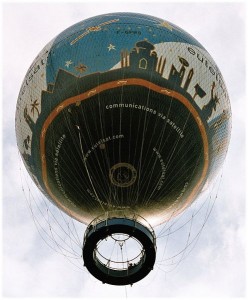
DigNittany: A favorite joke in my family was about the balloonist, lost in eastern Maine, who shouts down to a farmer: “Where am I?” To which the farmer replies “You’re in a balloon, you durn fool!”
Some argue that too often, the commentary on broadcasts of NCAA women’s volleyball matches is like the farmer’s reply to the balloonist: totally accurate, but really not very helpful.
What are some things you think announcers should focus on that would help viewers better appreciate what’s going on in the match and what to look for at the start of each rally?
tomclen: Rotations. Match-ups. Does team A have their best hitter in the front row when team B has their best blocker in the front row? Is team A in a rotation that has been their most productive? And substitutions….especially for teams that run a 6-2. I can’t tell you how many times I’ve watched a broadcast and a team is out of substitutions late in a match, but because the camera has never shown the subs or a graphic for subs and the announcers never mention it, sometimes you only realize it when you read about it on the teams website recap of the match.
And serving. Who are the servers likely to target and why? And what is the receiving team doing about it? Nearly every coach will tell you one of the most important aspects of success is serve-receive. Yet the announcers frequently don’t focus on this angle of the game. And, as I mentioned above, even more frustrating is that many commentators tend to get so caught up in replays that they frequently miss serves and serve reception.
joetrinsey: Matchups and comparisons are really helpful. Humans can learn almost anything really quickly if it’s phrased in terms of comparisons:
- “Team X has Big Banger Outside matched up against Little Setter. Let’s see if Team X is able to take advantage of the smaller blocker.”
- Serving strategy isn’t all that complicated. With just a little homework, the commentator should have an idea of who each team is trying to target. Point that out before the rally. “They’ve been picking on Player Y, let’s see if they go after her again.” You do see some of that, but it seems like they are afraid to get into anything resembling basic strategy. People aren’t stupid, and a feeling of some complexity is actually good because it makes the game seem more important. Rather than trying to relate it to a gym class sport for “everybody” (and thus, nobody), broadcasters should be doing everything possible to show how these teams are playing at a level so far beyond what you, the viewer, played at the backyard BBQ that you will just sit back and watch in amazement.
- Brevity is key. There’s only limited time between plays and you don’t want to miss live action.
- A HUGE factor is linking the replay to what the commentator is saying. It causes dissonance when the announcer is talking about one part of the play and the replay shows something different. The more coordinated the two are, the more the replay backs up what the commentator is saying, the better for fans watching.
One of the big takeaways for me is that ESPN seems to have this weird thing where they assume everybody is tuning into a volleyball match for the first time. If anything, it should be the other way around. I don’t think you grow a niche sport by trying to instantly appeal to the mainstream. You grow a deep connection with a hardcore audience and enlist their aid in spreading the sport to others.
DigNittany: Thanks so much. We looking forward to speaking with both of you again soon. And we’ll be featuring a reply from a current commentator soon, as well as a critique of the technical quality of streaming broadcasts.
________________________________________
Photo Credits
- Talking Heads logo: Isla Haddow-Flood, Africa Centre. This file is licensed under the Creative Commons Attribution-Share Alike 3.0 Unported license.
- Volleyball serve in the 2006 NCAA semifinal between Penn State and University of California, Irvine at Rec Hall: By Nathaniel C. Sheetz. This file is licensed under the Creative Commons Attribution-Share Alike 3.0 Unported, 2.5 Generic, 2.0 Generic and 1.0 Generic license.
- Volleyball Rotation graphic: By Loge. Permission is granted to copy, distribute and/or modify this document under the terms of the GNU Free Documentation License, Version 1.2 or any later version published by the Free Software Foundation; with no Invariant Sections, no Front-Cover Texts, and no Back-Cover Texts. A copy of the license is included in the section entitled GNU Free Documentation License.
- Sandow lifting the human dumbell, 1894: Strobridge Lithograph Co., Cincinnati & New York. This work is in the public domain in the United States because it was published (or registered with the U.S. Copyright Office) before January 1, 1923.
- Balloon: By Greudin. The copyright holder of this work releases this work into the public domain. This applies worldwide.
In some countries this may not be legally possible; if so: the copyright holder grants anyone the right to use this work for any purpose, without any conditions, unless such conditions are required by law. - Featured Photo — Bogart Bacall AFRS: This image is a work of a U.S. military or Department of Defense employee, taken or made as part of that person’s official duties. As a work of the U.S. federal government, the image is in the public domain.
